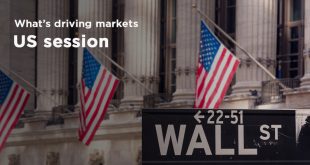GBP/USD bulls take a breather around a fortnight high surrounding 1.3600, during the sixth positive day amid Friday’s Asian session. Earlier, on Thursday, at 1.3605, GBP/USD off its highs of the day by is still positive by some 0.23% following the Bank of England that raised interest rates to 0.5% on Thursday.
The decision had been well telegraphed in the weeks leading into the meeting and markets had priced it in, but the clincher was the fact that nearly half its policymakers wanted a bigger increase to contain rampant price pressures. Back in December, the BoE was the first of the major central bank to actually raise its base rate since the pandemic began. It also signaled further modest tightening “in the coming months”.
In a surprise split decision, four of the nine Monetary Policy Committee members wanted to raise rates to 0.75% in what would have been the biggest increase in borrowing costs since the BoE became operationally independent 25 years ago. A slim majority, including Governor Andrew Bailey, voted for a 0.25 percentage point increase.”
BoE’s Decision Summary
The Bank of England’s MPC voted by a 5-4 majority to raise Bank rate to 0.50%. It got a bit more bang for its buck as Haskel, Mann, Ramsden and Saunders voted for a 50 bps increase.
The central bank ceases reinvestment of maturing gilts and starts to unwind its stock of corporate bonds. It reaffirmed to consider actively selling gilts when Bank rate reaches 1.00%.
It leans into an inflationary surge it has little control over and, as such, its policy remains hostage to fortune. In the press conference, which was dominated by questions on the real income squeeze, the policy makers seemed very aware of the numerous risks to growth.
The medium-term inflation forecasts suggest the peak in Bank rate might be much lower than the 1.50% the market is currently pricing. We forecast another 25 bps rate increase as soon as next meeting, before the MPC may decide it’s best to take a pause and re-assess.
As a consequence, cable vaulted over the psychological 1.3600 mark and printed a high of 1.3628. This was the highest level since Jan. 20. Additionally, UK gilts sold off, with the 10-year yield at its highest since January 2019.
The question now is whether there is more fuel in the sterling bull’s tank. Fundamentally, maybe not. GBP’s recent price action has reflected a weaker USD rather than GBP strength. Plus, the market dashboard has been calling for a USD pullback recently, given positioning and valuations.
Moreover, a main takeaway from the meeting was the fact that the BoE governor, Andrew Bailey, told investors not to assume the central was embarking on a long series of rate hikes. He explained that there would have to be a trade-off between strong inflation and weakening growth as many households see their incomes squeezed.
Now it is time to look into the US dollar. However, looking beyond that and away from UK domestics, Friday’s Nonfarm Payrolls is now the focus. This could be the catalyst that sterling bulls might use to squeeze out the remaining drops from this bullish leg in cable.
Wednesday’s shocking ADP report could be regarded as a bearish prelude for Friday’s Nonfarm Payrolls. This might be an event that could hammer down the greenback’s coffin that it was placed in on Thursday when DXY broke below 96 and tumbled to the day’s lows following a worsening series of ISM Services data, (59.9 vs 62.3 prior).
US officials have been hinting at an awful jobs number Friday and the ADP seems to have confirmed this on Thursday. (A total of -301k jobs were lost vs. an expected gain of 180k, while December was revised to 776k from 807k previously).
Traders will be cautious that while the Federal Reserve is expected to look through ay near-term weakness in the labour market, and subsequently hikes in March regardless of tomorrow’s jobs data outcome.
If labour market weakness persists for a couple of months beyond this, then the Fed will rethink its likely rate path. Therefore, a poor number could still hurt the greenback and enable GBP to glide higher.
As per the pre-BoE analysis, GBP/USD bulls stay on course ahead of the BoE event, the upside potential was highlighted as follows:
The price has burst through what might have been expected to be a firmer resistance on the 4-hour charts near 1.3525. A break of 1.3580 could set the stage for a rally through to the 1.3660s to mitigate an old imbalance of price between here and there.
The price extended the rally and has started to correct, penetrating the 38.2% Fibonacci retracement already with the 50% mean reversion in its sights where it meets a prior high. 1.3660 could be targeted on any subsequent US dollar weakness before the week is out.

 Noor Trends News, Technical Analysis, Educational Tools and Recommendations
Noor Trends News, Technical Analysis, Educational Tools and Recommendations




